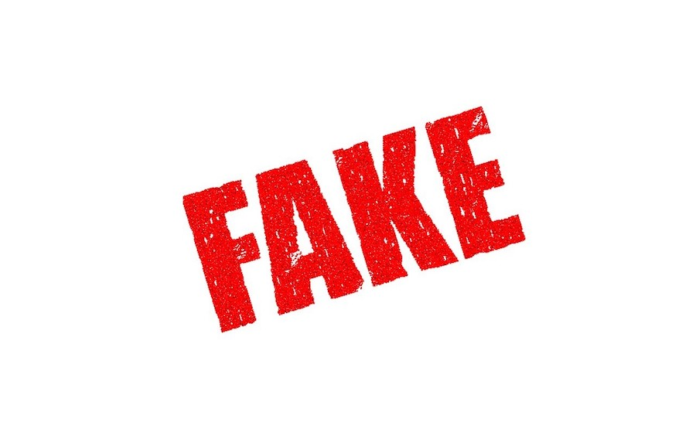Researched by Ray Joseph

The Internet is awash with fakers. Re-publishing or re-posting their online content hurts the credibility of those who fail to ask the right questions. This guide provides tips on verifying content found online — a helping hand in spotting the fakes and hoaxes first.
The bloody and broken body of a half-naked man is dragged down a crowded street, three soldiers walking alongside, one of them about to hurl a huge rock at the unconscious man’s head.
A shocking picture of the event, taken by Associated Press photographer Jerome Delay, was published in newspapers around the world. The dateline: Central African Republic, February 2014.
A month later the same picture re-emerged on Twitter, but this time it was said to show “a homosexual stoned by police” in Uganda, a country that was in the process of passing legislation outlawing and attaching harsh penalties to homosexuality.
Fake images spread easily online
The picture went viral after it was widely shared on Twitter and other social media, including by some journalists who should have known better.
Yet a quick search using TinEye — a free extension for Chrome and Firefox browsers, an essential and easy-to-use tool for journalists in this age of Photoshop and social media — would have saved a lot of red faces. The software uses image identification technology to determine where an image has come from. Google reverse image search and RevEye, which does a reverse search of several search engines, are also very useful for finding out if a picture has been used before and where.
Then there was the March 2014 tweet about a car swallowed by a giant pothole in Johannesburg. Again, the image was widely shared on social media.
A quick reverse image search would have revealed that the picture, though genuine, was in fact taken in Durban in 2009. Another giveaway was the fireman in the corner of the picture wearing a “Durban Metro” coat.
Yet another example of a misrepresented photograph involves a picture that was intended to quell rumours about the ill health of Zimbabwean president Robert Mugabe but instead got the rumour mill working overtime. Posted to Facebook on 11 January 2014, it showed a healthy looking Mugabe, said to be arriving home from Singapore. But as this story revealed, the picture originally appeared on picture-sharing site Flickr on 28 January 2013 and was said to show Mugabe arriving at an African Unity summit in Ethiopia.
These examples reinforce two basic social media rules that you fail to follow at your peril: “If it seems too good to be true, it often is”, and “Think thrice before you post once.” Mistakes can harm your credibility as a journalist and as a source of reliable information.
The same goes for Twitter
This applies as much to tweets as it does to pictures: Twitter is an unforgiving space that self-corrects any error, with people gleefully jumping in to point out mistakes you make. Don’t think deleting your tweet will solve the problem: someone may have grabbed a screenshot of the offending remark, especially if it has been retweeted. Remember this, if you want to report on a Tweet you think inappropriate take a screengrab yourself before it is deleted.
Twitter has a way of regularly killing off famous people, as happened with a tweet purportedly from talk-show host Piers Morgan claiming Nelson Mandela had died months before his actual death. It went viral within minutes, but anyone who had taken the time to check the veracity of the information before retweeting it would have seen that the account the tweet originated from wasn’t @piersmorgan but a parody account, @piersrnorgan.
Be on the lookout for parody Twitter accounts. If a Twitter profile has a tick next to it, it means that Twitter has verified the identity of the owner, which is especially useful for famous people who are often parodied in fake accounts.
Why you should think before you tweet
A good question to ask yourself before posting to social media, tweeting or retweeting is: “Would I go to print, broadcast or go to air with this?”
Herein lies the problem with social media: journalists often break the basic rules of checking and verification of information and sources that they would apply to publication in more conventional forms of media. It should become instinctive to check first, rather having to repent at leisure.
Zombie Journalism’s Mandy Jenkins has compiled an accuracy checklist for Twitter users that offers the following suggestions for getting your posts right the first time:
- Before tweeting information: Has the information you want to share been confirmed? (See verification guide below.)
- When tweeting: Ensure credibility by double-checking that proper nouns and Twitter handles are spelt correctly; that hyperlinks are correct; that attribution is provided where necessary; and that the tweet makes sense.
- When retweeting: Remember that your name will be associated with the content you retweet — make sure that the source you use for factual information is reliable.
Verification: A practical guide
Craig Silverman, a journalist and editor of Regret the Error, a blog about media errors, accuracy and verification, has drawn on the work of media experts to compile a best practice guide for social media verification. These guidelines include:
Verifying the source
- Location: Is the user situated in the locality of the event or passing on information from a different locality?
- Account history: Check how long the account has existed (recent accounts may be opportunistic) and what kind of content the user normally shares.
- Social network: With whom does the user interact on the social network? Who is sharing the content — and are they credible?
- Communicate: Make direct contact with the source to verify the authenticity of the source and credibility of the information being passed on.
Verifying the content
- Crosscheck: Check the shared information against news sources to check for veracity.
- Crowd-source: Verify accuracy by putting the information out on your networks asking followers to help verify information.
- Find the original: Check message timestamps and go back to the original source of the information. This can also provide additional context or information.
Verifying pictures and video content
- Location: Check the location of the source of the information.
- Crosscheck: Check the graphics against Google Street View or satellite imagery of the location to verify details. Also, check the photograph or video against news reports of the event.
- Details: Ensure that the details of the picture or video clip are correct. Do the weather and scenery match those of the purported location? Do car registrations and vehicle makes match those used in the purported location?
- Translate: Ensure languages and accents are in line with the purported location.
Other useful links and tools
- Social news agency Storyful’s validation process
- The Verification Handbook: Guide to dealing with user-generated content; edited by Craig Silverman; available online in PDF version
Search tools
- Twitter Advanced Search: For searching for people, subjects and pictures on Twitter
- Storyful multisearch: Open-source software that searches multiple social networking platforms; a free Google Chrome browser extension
- Wolfram Alpha: An “answer generator” that provides a direct response to factual queries rather than a list of sources to consult for information
- Twicsy: Searches Twitter for images
- TwXplorer: Searches Twitter for most recent tweets on a particular subject. One useful element of twXplorer is that when you do a search it reveals the hashtags people are using in tweets on that subject, as well as tweets and links
- Google Advanced Search: Narrow down your search results on a particular subject using this form
Web page verification
- Digital Inspiration’s guide on how to find the date a web page was first published on the Internet
- Wayback Machine: View archived versions of web pages across time and capture a web page as it appears now for use as a trusted citation in the future
- Cached View: Cached view of any page on the Internet through multiple cached sources
Picture verification
- Google reverse image search: Use a picture as your search to find related images from around the web. Right-click on an image and select “search Google for image”
- Jeffrey’s Exif Viewer: Submit an image to determine date, time and location data
- TinEye: Submit an image to find out where it comes from, how it is being used, if modified versions of the image exist and if a higher-resolution version is available
Video verification
- YouTube Data Viewer: Insert the URL of a YouTube video and this tool will give you details of the video, including when it was uploaded. It will also take screengrabs from the video and allow you to do a Google reverse search to find other iterations and posts of the same video
- Video Vault: Use this tool to preserve videos, take screengrabs to do a reverse search, slow down and speed up video and more
Verification of people
- Foller.me: Provides analytics for public Twitter profiles
- Google, Pipl, Spokeo: Searches for information on individuals
- Who tweeted it first?: Enter search keywords or a link to find the first tweet that contained the term.
Myth-busting and debunking urban legends
- Snopes: Urban legends reference page
- Museum of Hoaxes: Historical hoax archive
- Hoax Slayer: Latest email and social media hoaxes as well as current Internet scams
- Hoax of Fame: Tumblr blog about debunking fake images and verifying real ones
- Wafflesatnoon: Website focusing on hoaxes, rumours and odd news
- Bellingcat: Investigative search network for citizen journalists to investigate current events using open-source information such as videos, maps and pictures.
Source, Jambla.Africa





